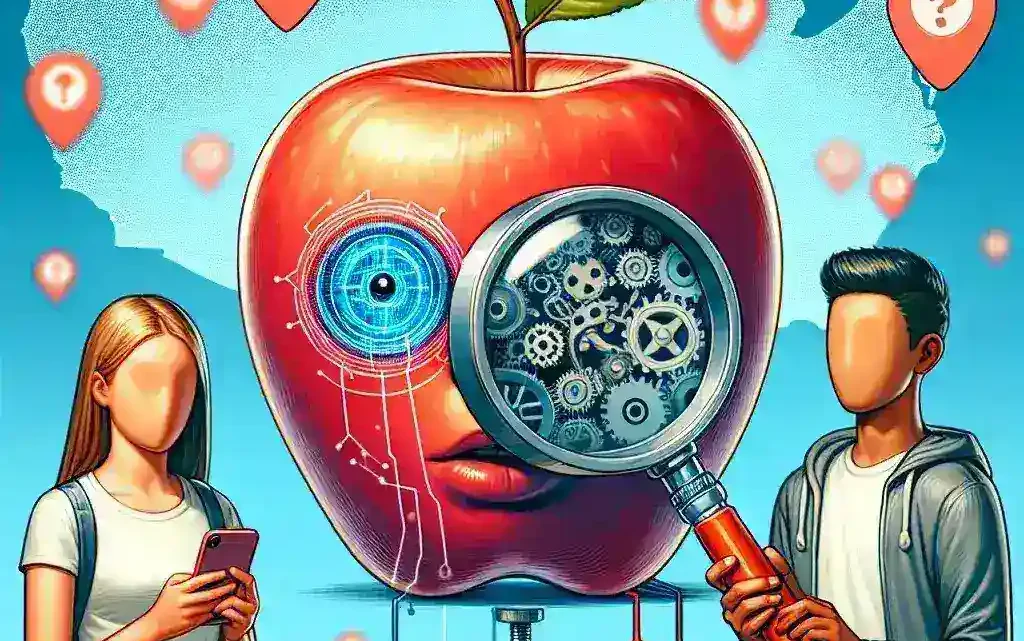Introduction
As digital technology continues to evolve, so does the need for parents to monitor their children’s app usage. Apple has recognized this necessity and is expanding its AI-powered parental alerts system in the United States, aimed specifically at teen app use. This initiative not only enhances parental control but also promotes healthy tech habits among teenagers. In this article, we will explore the implications of this move, its potential impact on families, and what it means for the future of digital parenting.
The Rise of AI in Parental Controls
Artificial Intelligence (AI) has made significant strides in various sectors, including education, healthcare, and now, parenting. The integration of AI in parental controls signifies a proactive approach to managing children’s digital interactions. By utilizing AI algorithms, Apple aims to provide tailored insights and notifications regarding app usage, enabling parents to make informed decisions about their children’s online activities.
Understanding the AI-Powered Alerts
Apple’s new system leverages machine learning to analyze usage patterns and behaviors associated with different applications. Here’s how it works:
- Monitoring Usage: The AI tracks the amount of time a teenager spends on various apps, categorizing them into productivity, social media, gaming, and more.
- Behavioral Insights: It identifies trends in usage, such as excessive screen time or late-night app activity.
- Tailored Alerts: Parents receive alerts based on their teen’s usage patterns, allowing them to intervene when necessary.
Benefits for Parents
The benefits of this system are manifold:
- Informed Decision-Making: Parents gain insights into their children’s app usage, facilitating better conversations about screen time and digital well-being.
- Encouraging Healthy Habits: With timely alerts, parents can encourage healthier tech habits, such as taking breaks or limiting app usage in the evenings.
- Enhanced Communication: The system fosters open dialogues between parents and teens regarding technology use, promoting trust and understanding.
Historical Context: The Evolution of Parental Controls
To comprehend the significance of Apple’s move, it is essential to consider the historical context of parental controls. In the early days of the internet, parental controls were primarily limited to blocking specific websites or monitoring browser history. However, as technology progressed, so did the need for more sophisticated tools. Companies began to integrate features that allowed parents to set time limits, monitor social media activities, and restrict app downloads.
The Shift Toward AI
The introduction of AI in parental controls represents a paradigm shift. Instead of relying solely on manual settings, parents can now receive real-time insights and alerts. This evolution is indicative of a broader trend in technology where AI enhances user experience and functionality.
Future Predictions: Where is This Heading?
Looking ahead, the expansion of AI-powered parental alerts could pave the way for more comprehensive digital wellness solutions. As technology continues to advance, we may see:
- Integration with Other Devices: Future iterations might integrate with smart home devices, providing a holistic view of a teen’s digital footprint.
- Community Features: Platforms may evolve to include community-driven features where parents can share tips and experiences related to app usage.
- Customizable Alerts: Parents may have the option to customize what alerts they receive based on their family’s values and needs.
Real Examples of Success
Many families have already begun implementing AI parental controls, and the results are promising. For instance, the Thompson family in California reported a significant reduction in their teenage daughter’s screen time after utilizing AI alerts. They were able to engage her in discussions about her app usage, leading to a more balanced approach to technology.
Pros and Cons of AI-Powered Alerts
While the benefits are evident, it’s crucial to consider potential drawbacks as well:
Pros:
- Enhanced Monitoring: Parents can keep tabs on their children’s activities without invasive tactics.
- Better Engagement: Encourages communication and understanding between parents and teens.
- Promotes Responsibility: Teens learn to manage their screen time and app usage better.
Cons:
- Overreliance on Technology: There’s a risk that parents may rely too heavily on technology for monitoring, neglecting direct conversations.
- Privacy Concerns: Some families may feel uncomfortable with the level of monitoring AI provides.
- Technical Issues: As with any technology, there may be bugs or inaccuracies in the AI system.
Cultural Relevance: Navigating Screen Time in Today’s Society
In today’s society, managing screen time is more crucial than ever. With the rise of social media and online gaming, teenagers face unique challenges. Apple’s initiative reflects a cultural shift towards prioritizing mental well-being and fostering healthier tech habits. By expanding AI-powered alerts, Apple is not only addressing parental concerns but also contributing to a larger conversation about responsible technology use.
Expert Opinions on the Matter
Experts in child psychology and digital wellness have expressed their support for AI-powered parental controls. Dr. Emily Chen, a child psychologist, states, “This initiative by Apple represents a proactive step towards bridging the communication gap between parents and teens. By equipping parents with the right tools, we can foster healthier tech habits among the younger generation.”
Conclusion
In conclusion, Apple’s expansion of AI-powered parental alerts for teen app usage is a monumental step towards fostering a safer and more responsible digital environment. As families navigate the complexities of technology, these tools will empower parents to guide their children in developing healthy habits while maintaining open communication. The future of digital parenting looks promising, with AI leading the charge in creating supportive frameworks for both parents and teens.

